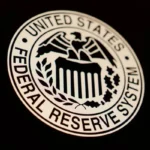
Recession risk in the US remains low in the wake of several upbeat economic. Retail sales and residential housing construction in particular posted firmer numbers for October. Industrial output was flat last month, but the mildly negative annual trend continues to move closer to zero, driven by modest growth in the manufacturing sector. Meanwhile, the labor market still looks poised to expand. Payrolls continued to rise in October and growth looks poised to continue in the near term based on yesterday’s news that jobless claims dropped to the lowest level since 1973.
The macro trend, in other words, remains solidly positive. October’s economic profile is highly unlikely to mark the start of an NBER-defined recession. A similar narrative applies via the near-term projections through December. In fact, the Atlanta Fed yesterday (Nov. 17) raised its fourth-quarter GDP nowcast to a solid 3.6% increase (seasonally adjusted annual rate). If the estimate holds, the US economy will expand at the strongest pace in more than two years.
The encouraging data is also showing up in The Capital Spectator’s proprietary business-cycle indexes. As projected in previous months (see bottom chart here and here, for instance), US economic activity has rebounded after slowing in the first half of the year. Although there’s still red ink in various components that comprise the benchmarks, the broad trend has improved lately and current projections suggest that the numbers overall will continue to skew positive through the end of the year, as shown in the last chart below. (Keep in mind that The Capital Spectator also monitors the macro trend across a broader set of data and analytics on a weekly basis in The US Business Cycle Risk Report in addition to this monthly update.)

Aggregating the data in the table above into business cycle indexes continues to reflect a broad trend that remains comfortably positive. The Economic Trend and Momentum indices (ETI and EMI, respectively) ticked up again vs. last month’s update and both benchmarks remain moderately above their respective danger zones: 50% for ETI and 0% for EMI. When/if the indexes fall below those tipping points, we’ll have clear warning signs that recession risk is at a critical level, in which case a new downturn is likely. The analysis is based on a methodology outlined in Nowcasting The Business Cycle: A Practical Guide For Spotting Business Cycle Peaks.














